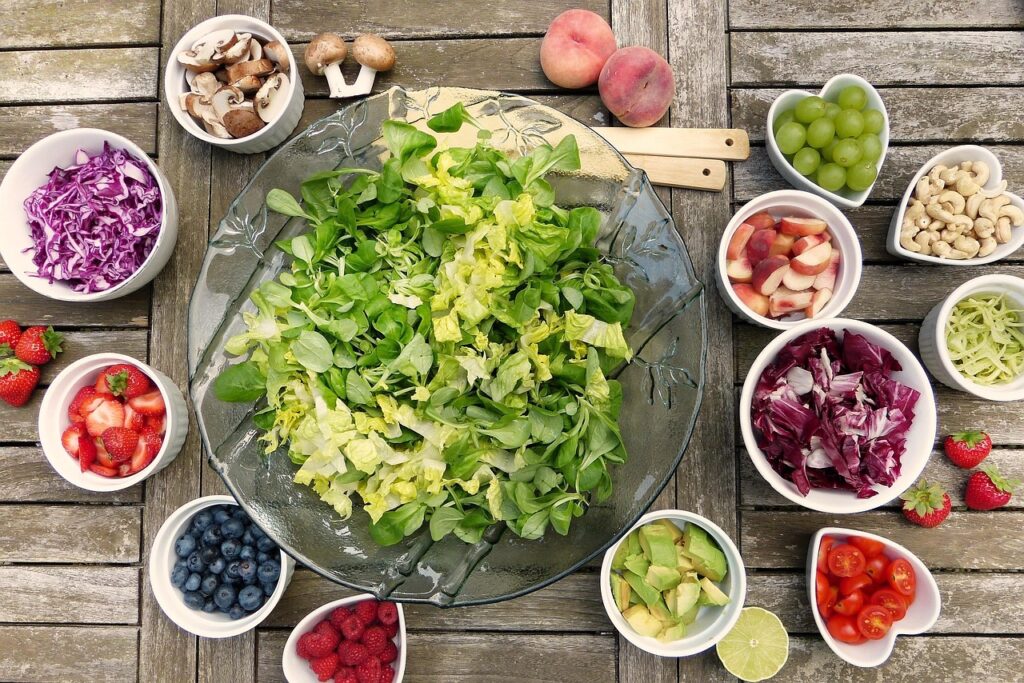When it comes to nutrition, fiber doesn’t always get the spotlight, but perhaps it should. This humble carbohydrate plays a major role in keeping your digestive system healthy and moving, supporting heart health, and managing blood sugar levels. Yet despite its various health benefits, many people overlook this nutrient and fall short of their daily needs.
What Is Fiber?
Fiber is a type of carbohydrate found in many plant-based foods. Unlike other carbohydrate sources, fiber isn’t digested and absorbed by the body. Instead, it passes through your digestive system, offering many health benefits along the way.
There are two main types of fiber:
– Soluble fiber, which soaks up water and forms a gel-like substance as it passes through your digestive system. It can help slow down digestion, lower cholesterol and maintain blood sugar levels.
– Insoluble fiber, which doesn’t dissolve in water. It adds bulk to the stool and helps food pass more quickly through the digestive tract, promoting regular bowel movements.
Both types are equally important, and most high-fiber foods contain a good mix of the two.
Why Fiber Is Important
Some of the health benefits of getting enough fiber include:
1. Supports Digestive Health and Gut Microbiome
Fiber keeps your digestive tract moving. It can help prevent constipation, promote regular bowel movements, and feed the “good” bacteria in your gut, supporting a healthy microbiome.
2. Helps Control Blood Sugar
Soluble fiber slows down absorption of sugar, which can help prevent spikes and crashes in blood sugar levels. This is especially important for people with diabetes or insulin resistance.
3. Lowers Cholesterol
Soluble fiber can help lower levels of LDL («bad») cholesterol by binding with the cholesterol particles and flushing them out of the body.
4. Promotes Satiety
Fiber-rich foods tend to be more filling, helping you feel full and stay full longer.
5. May Reduce Risk of Chronic Disease
A diet high in fiber has been linked to a lower risk of heart disease, stroke, type 2 diabetes, and certain cancers, particularly colorectal cancer.

How Much Fiber Should You Be Consuming?
According to the Dietary Guidelines for Americans, the recommended daily fiber intake is:

The average American only meets about half the daily fiber intake recommendations and only about 5% actually meet the recommendations. This is why it is so important to aim to consume a variety of fiber-rich foods in your diet.
The good news is that there are plenty of delicious and nutritious foods to help you hit your fiber goals. Here are some fibrous food examples:
Fruits (fiber per 1 medium piece or ½ cup):
Pear (with the skin): ~5.5g
Apple (with the skin): ~4.4g
Raspberries: ~4g
Vegetables (fiber per ½ cup cooked):
Broccoli: ~2.6g
Carrots: ~2.3g
Sweet potato (with the skin): ~3.8g
Whole Grains:
Oats (1 cup cooked): ~4g
Quinoa (1 cup cooked): ~5g
Brown rice (1 cup cooked): ~3.5g
Whole wheat bread (1 slice): ~2g
Legumes (fiber per ½ cup cooked):
Lentils: ~7.8g
Black beans: ~7.5g
Chickpeas: ~6g
Nuts & Seeds (fiber per ounce):
Chia seeds: ~10g
Flaxseeds: ~7.7g
Almonds: ~3.5g

Easy Ways to Add More Fiber to Your Diet
Here are some simple tips to boost your daily fiber intake:
1. Opt for Whole Grains
Choose carbohydrate sources such as oatmeal, whole-grain cereal and toast, or brown rice and quinoa instead of refined grains.
2. Add legumes
Legumes such as beans, lentils, and chickpeas are fiber powerhouses. You can add them to soups, salads, or pasta dishes to increase fiber.
3. Load up on fruits and veggies
Aim to consume a variety of colorful produce (eat the rainbow!). Keep the skins on when you can, that’s where much of the fiber is hidden.
4. Try adding chia or flax seeds
These tiny, tasty seeds can pack a powerful fiber punch. Add them to yogurt, smoothies, or oatmeal.
5. Read nutrition labels
Look for food products labeled “high fiber” (5+ grams per serving) or “a good source of fiber” (2.5 – 4.9 grams) when choosing snacks and pantry staples in the store.
—
A Word of Caution When Increasing Fiber Intake…
If you’re not used to eating a lot of fiber, you’ll want to increase your intake gradually to avoid digestive discomfort like gas or bloating. It’s also important to ensure you’re drinking plenty of water — fiber works best when it absorbs liquid.
In Conclusion..
Fiber may not be the most glamorous or popular nutrient, but it’s essential for good health and digestion. By making some small, consistent changes to include more fiber-rich foods in your diet, you’ll be doing your body a huge favor. Your gut, heart, and energy levels will thank you!
Check out these fiber filled recipes:
– Four Bean Soup
– Chocolate Chia Pudding
– Black Bean and Corn Salsa
– Kale and Tomato Spaghetti
– Italian Bean Patties
– Yogurt Fruit Crunch
– Black Bean Stuffed Peppers
– Butternut Squash and Apple Soup
– Bean Burritos
– Home Run Hummus Wrap
– Pumpkin Dip
– Turkey Lentil Chili
– Garden Fiesta Tuna Pockets
– Green Smoothie
– Kale, Chickpea, and Barley Soup
– Greek Green Beans and Tomatoes
– Buffalo Chicken Stuffed Spaghetti Squash
—
Written with help from FNP Summer Intern, Genna VanHook.

